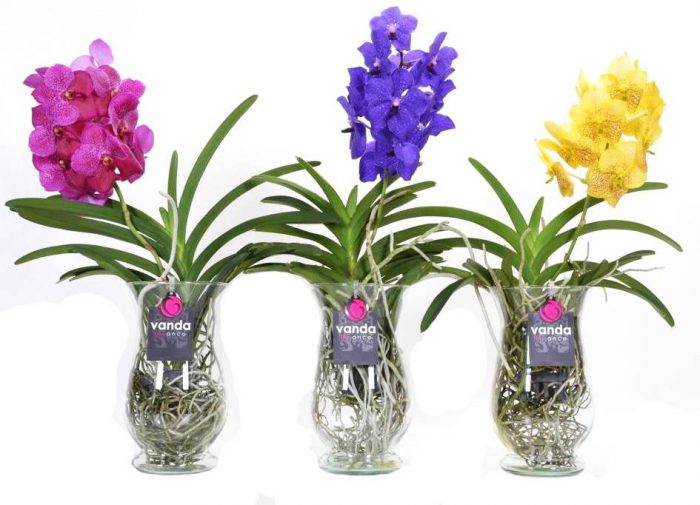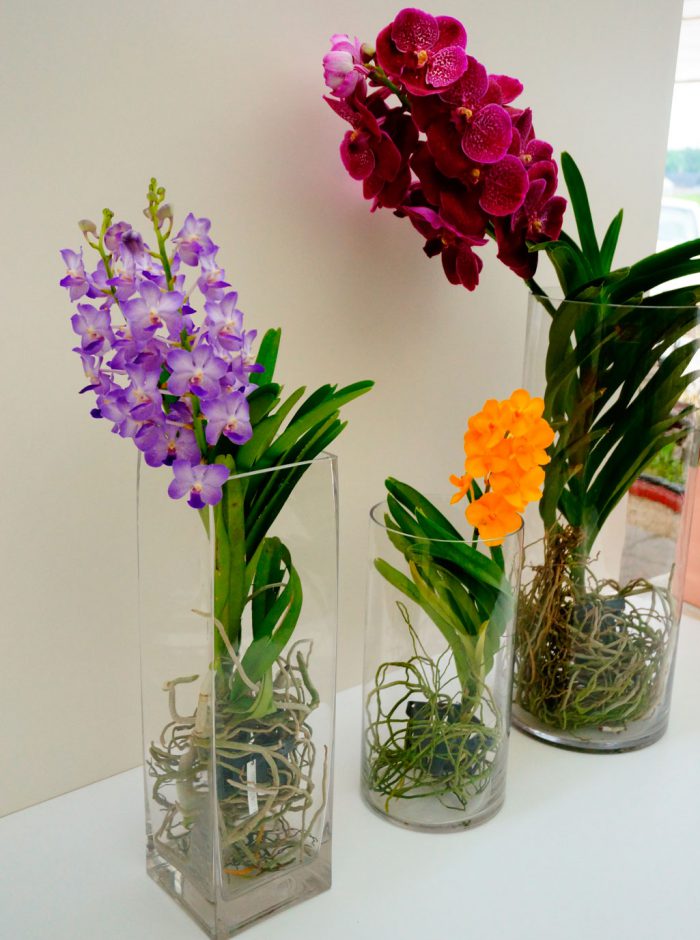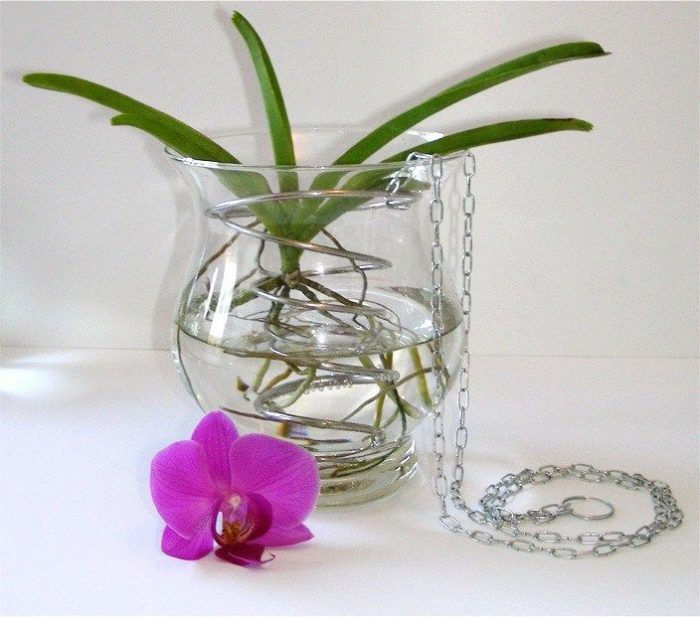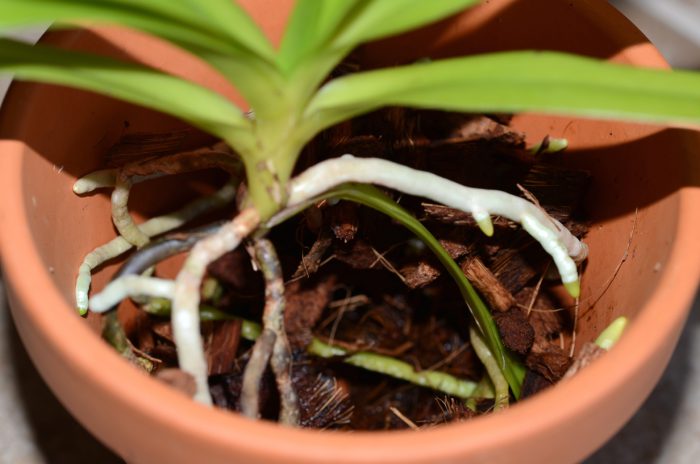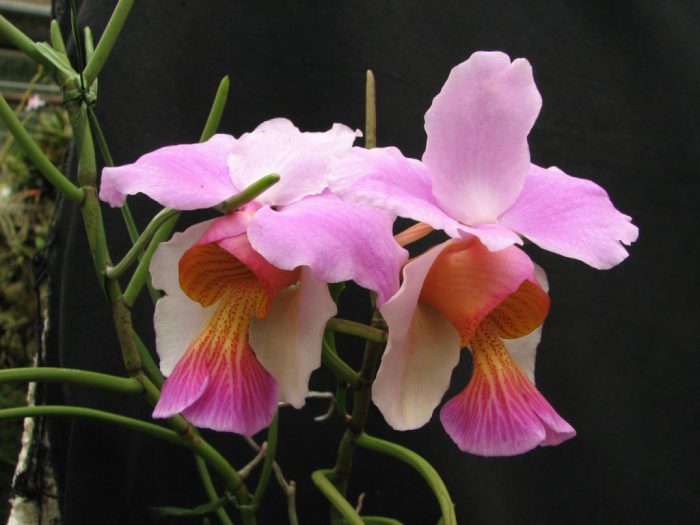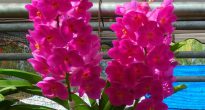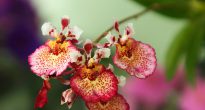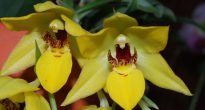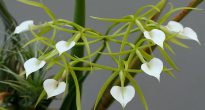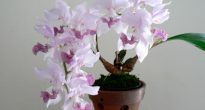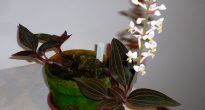Until recently, it was believed that it was impossible to grow such a beautiful, but very capricious flower like an orchid at home. However, today it is quite successfully grown by a large number of flower growers. But in order for such a flower to live for a long time and delight with its unique beauty, it is necessary to learn how to properly care for it.
Wanda is considered a royal orchid. A name such as "Vanda" has Sanskrit roots. This plant is also called in India. This species was named in this way by Sir William Jones in 1795. This orchid is of high value. This plant crosses easily and therefore has many hybrids.
Wanda is an epiphytic plant that has aerial roots. It prefers to grow on rocks and trees, but not on the surface of the ground.
This genus has a monopodial ("one-legged") character of growth. That is, the vanda stem grows exclusively upward and can reach several meters. This genus unites about 25 species of various plants.
This plant can be found in natural conditions in Thailand, in the East and North of India and in the South of China.
It has a fairly pronounced stem, which is completely covered with cylindrical leaves. Peduncles appear from the axils of the leaves. They bear a lot of fairly large flowers (diameter from 8 to 10 centimeters), which can be painted in different color shades, the main ones being: lilac, pink, and also blue. On the surface of the flowers, there are streaks of a darker color, which are similar to the mesh. The plant blooms for a long time, usually up to 12 weeks.
Content
Wanda orchid care at home
In order for the wanda to grow and develop normally, she needs special conditions of detention and proper care.
Illumination
This is a fairly light-loving plant, but you should not allow direct sunlight to fall on the foliage, as they can cause burns. If there is too little light, the plant may not bloom. The duration of daylight hours all year round should be about 12 hours. Such an orchid prefers diffused, but bright lighting. If necessary, the vanda can be supplemented with fluorescent lamps. In the summer, when the temperature outside is at least 16 degrees, it is recommended to move the flower to fresh air.First, it must be placed in partial shade, and gradually it must be accustomed to sunlight.
The fact that there is enough light for a plant can be understood by the color and size of the foliage. The color should be normally green. So, if the leaves are dark green - the plant does not have enough light, if they are pale green, yellowish - the lighting is too intense. In the case when the last pair of leaves is longer than the penultimate one, the lighting is made more intense, and when, on the contrary, the penultimate pair is longer, then the illumination is reduced.
Temperature regime
Loves warmth very much. So, when grown in the middle lane, a vanda requires a temperature of 18 to 30 degrees in the daytime and at least 16 degrees at night. It should be remembered that the higher the temperature in the room, the higher the humidity required by the plant. And the frequency of airing should also increase.
To stimulate flowering, the plant shows differences in daily temperatures. In this case, the temperature difference can be up to 10 degrees.
Earth mix
It is recommended to grow this kind of orchid with a bare root system, which promotes better air circulation. You can also grow in a special substrate, which consists of chopped pine bark and various impurities.
How to water
This plant needs wet and dry cycles, which should be alternated. When it's hot outside, you need to water the vanda once a day, and in the cold season - once every 1-2 days (preferably before lunchtime). There should be no stagnation of water near the root system.
Such a flower can be watered in several ways:
- Hot shower - this method is most suitable for the wanda. The plant should be placed in a bath and very warm water should be watered from the shower until the roots change color to green. Leave the plant for 30 minutes so that all excess liquid can drain off. 60 minutes after the shower, the leaves should be wiped with a napkin made of natural fabric.
- Immersion - the pot with the orchid must be immersed in a container filled with water for 30 seconds. Then the plant should be taken out and wait another 30 seconds for the excess liquid to drain. Thus, only absolutely healthy plants are watered.

- Watering can - watering is done from a watering can. Water must be carefully poured along the edge of the pot until the liquid begins to overflow from it. After the excess water drains, watering must be repeated.
- Spraying - this method is applicable for vandas grown with bare root system, because it dries faster.
Fertilizer
Top dressing of this flower consists in moistening it from a sprayer or soaking it in water, which is 5 or 6 degrees warmer than the air temperature. This procedure is carried out in the morning, and on hot summer days also at noon. It is forbidden to moisten the plant in the evening or at night, as this can provoke the development of the disease.
Fertilize the vanda once a month with mineral fertilizers. All components of the fertilizer should be taken in equal proportions. 13 grams of finished fertilizer is dissolved in 10 liters of water. The plant is fed during watering. Young specimens, if desired, are fed once every 1-2 weeks.
To understand if you are fertilizing the vanda correctly, you need to pay attention to its appearance. With a lack of nutrients, flowering is weak. If the plant is overfed, it becomes lethargic, and the upper part softens. Pay attention to the young leaves, on their surface there is a pale green strip of a centimeter wide. A narrower strip indicates a lack of fertilizer, and a wider one (up to 2 centimeters) indicates an excess.
Transplant features
Before replanting this orchid, you should inspect the root system and remove the rotten parts. This must be done while the roots are dry. Systematic transplantation is required for young plants, and for those with very long roots it will be difficult to take root in a fresh substrate.
The plant needs an urgent transplant if:
- the substrate is heavily caked and does not allow air to pass through;
- substrate of poor quality, poorly permeable to water and dries out for a long time;
- the soil is dirty and not balanced;
- the roots are too buried in the ground;
- rot appeared on the root system.
Reproduction methods
Seed propagation is used only under laboratory conditions. When grown in an apartment, Vanda can be propagated vegetatively. To do this, separate ½ part of the upper section of the stem and plant it in the ground. It should be placed in a shaded, warm place and ensure regular spraying (once a day). Do not water. Places of cuts are treated with crushed charcoal.
Pests and diseases
Wanda can contract the following diseases:
- Atrophy of flower parts - occurs due to overdrying or overheating of the root system. There is no cure.
- Spider mites and transparent mites Rinse the foliage thoroughly with soapy water. Specialty chemicals can be used, but most often they are ineffective.
- The appearance of cracks in sheet plates - may appear due to cooling after watering, excessive fertilization, as a result of mechanical damage, due to a large amount of nitrogen in the soil, and also due to sunburn. Not treated.
- A fungal infection can be transmitted through water or airborne droplets - blackish bumps, mucus and strange patterns appear on the surface of the foliage. The plant must be isolated, the affected parts removed, disinfected and treated with a fungicide.
- Viral infection - annular spots appear on the surface of the foliage. It cannot be completely cured.
- Wet rot (bacteriosis) - arises from bacteria.
- Thermal burn - the plant has been exposed to excessively hot air. It looks like a sunburn.
- Fusarium wilting - at the junction of the leaflet with the shoot, a depressed dark spot is formed. The leaf plate crumbles and dies off.
Video review
Main types
Wanda roll
This species has a large branched stem, which can reach 3 meters in height, as well as a large number of roots. Rolled leaves reach 20 centimeters in length, and their diameter is only 3 millimeters. On the peduncle there are from 3 to 6 flowers of a fairly large size, so they can reach 10 centimeters in diameter.
Sepals and petals with wavy edges have a rounded or rhomboid shape. The lip (several petals fused with each other) has a three-lobed shape. The wide wedge-shaped central lobe has a purple color, and the side lobes are yellow and have reddish dots on their surface.
Blooms in October.
Wanda blue
Its straight stem can reach a height of 100 centimeters. There are a large number of roots. The toothed belt-like leaves in the upper part have an oblique cut. The racemose inflorescences can be oblique or straight, and they grow exclusively upward. The peduncle bears from 6 to 15 large (up to 10 centimeters in diameter) lavender flowers, and a mesh pattern is placed on their surface.
Wide ovate or crested sepals taper towards the base. The small lip stands out for its rich color. This plant blooms in October – November.
Wanda tricolor
Its straight stem can reach a height of 150 to 200 centimeters. Belt-like long leaves grow in 2 rows. On the peduncle there can be from 7 to 10 fragrant flowers of large size. They are creamy or white in color and have brownish spots on their surface.
Egg-shaped petals and sepals have wavy edges. The claw is wide. The three-lobed lip is similar in size to the flowers. The guitar-shaped central blade is large enough and is colored pink or purple.The blades located on the sides are rather small. Such a plant blooms from October to January, as well as in May and June.

